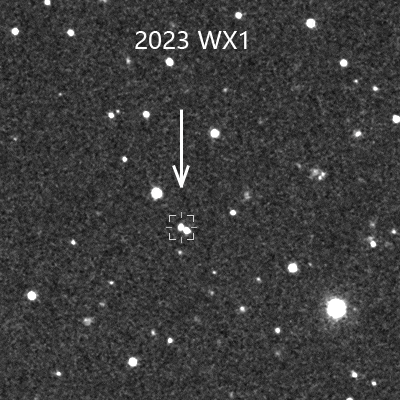On November 22, 2023, the International Astronomical Union’s Minor Planet Center (MPC) issued an announcement confirming the discovery of two near-Earth asteroids (NEAs), 2023 WX1 and 2023 WB2 by WFST. This is the first time of the NEA discovery with WFST.
2023 WX1 and 2023 WB2 were detected by WFST on November 18th, with apparent magnitudes of 20.8 and 21.0, respectively. Their apparent motion speeds are about 0.513 degrees and 1.006 degrees per day, respectively. Orbits of the two NEAs were confirmed based on international follow-up observations. The minimum orbital intersection distance between 2023 WX1 and Earth is about 0.0416 astronomical units, with an estimated diameter of approximately 170 meters.


Asteroids and the solar system study is one of major science objectives of WFST. From October 2023, WFST initiated test observations of small bodies in the solar system. As of now, the WFST solar system research team led by Dr. Haibin Zhao has newly discovered a number of main-belt asteroids, and the team has also refound multiple NEAs such as 2004 XO and 2008 WY13, with several new NEA candidates awaiting confirmation through subsequent follow-ups.